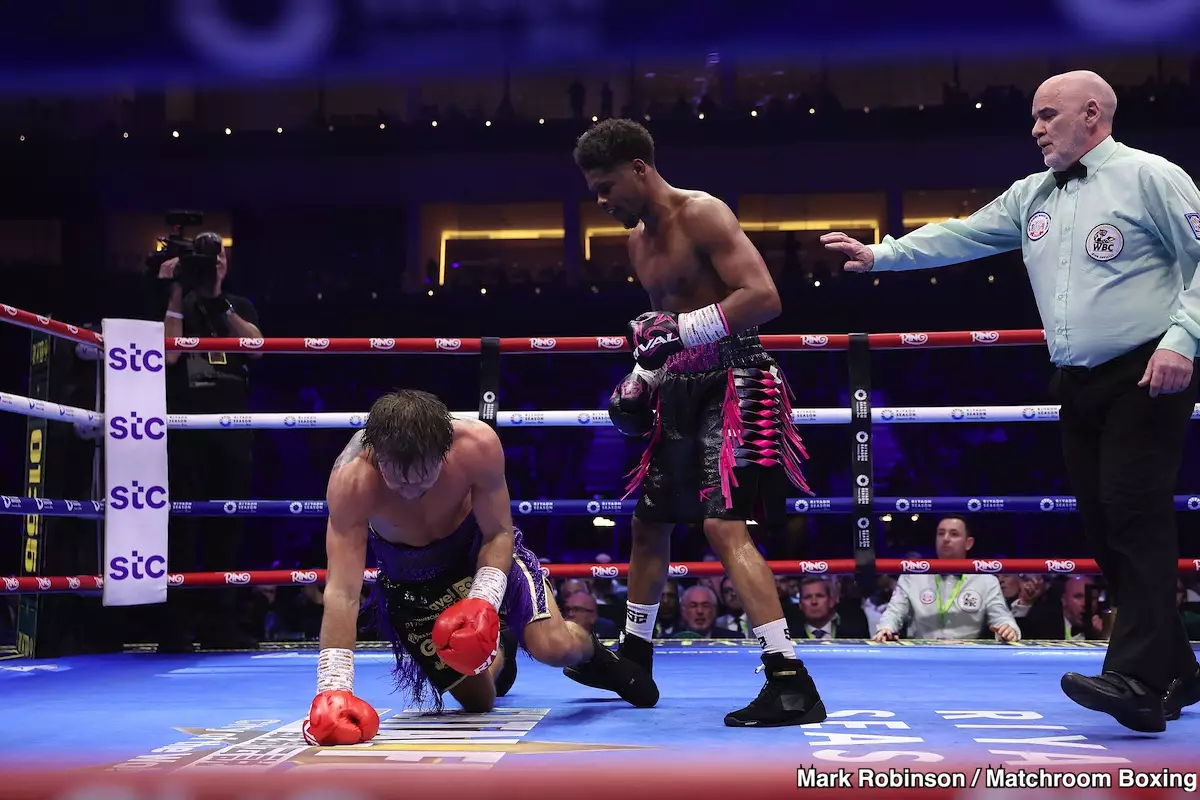In the world of boxing, discussions about potential matchups often ignite intense debates, especially when they involve high-profile fighters like Gervonta Davis and Shakur Stevenson. Recently, role model-turned-critic Rolando ‘Rolly’ Romero made some notable assertions regarding the hypothetical match between these two fighters. Romero, known for his unfiltered opinions, believes Stevenson should avoid Davis at all costs, a stance that arises not only from skepticism about Stevenson’s power but also from his performance against Edwin De Los Santos.
Romero’s skepticism is rooted in Stevenson’s recent fight, where he struggled to deliver a decisive knockout of De Los Santos after nine rounds. This fight was characterized by a lack of aggression and knockout potency that Romero finds concerning. According to Romero, Stevenson appeared to ‘jump’ around the ring, doing everything possible to avoid taking significant damage rather than seeking a victory through aggressive tactics. These observations lead to Romero’s contention that Stevenson might even ‘jump out of the ring’ if faced with the ferocity and punching power of Gervonta Davis, boasting an impressive record of 30 wins and 28 knockouts.
This raises critical questions underpinning Romero’s assertions: Is Stevenson’s fighting style adaptable enough to face a power puncher like Davis? Can Stevenson shift from being a technical fighter to one who possesses knockout ability? Romero’s comments no doubt shine a spotlight on Stevenson’s somewhat passive approach, particularly when compared to other elite fighters like Devin Haney, deemed more explosive in their fight strategies.
Interestingly, Gervonta Davis has remained relatively quiet about the prospect of going head-to-head with Stevenson. Romero points out that Davis likely won’t pursue the fight unless substantial financial incentives are on the table. This echoes a prevalent theme in boxing where marquee fighters often weigh the potential rewards against the perceived risks of a match. Given the audience’s reaction to a fight that could turn dull—with Stevenson zigzagging to evade Davis—it’s understandable why Davis might prefer to wait for a more lucrative opportunity.
Speculation surrounds this potential bout, particularly with Matchroom promoter Eddie Hearn indicating that plans could come to fruition if financial backing materializes from individuals like Turki Alalshikh. However, substantial financial backing does not guarantee a compelling match, as illustrated by Stevenson’s recent underwhelming performance.
One of the most compelling aspects of Romero’s critique is his acknowledgment of Stevenson’s immense technical skill. Described as a ‘masterpiece’ in the ring, Stevenson is undeniably talented, showcasing some of the best technical boxing of his generation. However, Romero argues that despite his skills, Stevenson’s hesitation to inflict damage detracts from his entertainment value as a fighter.
He passionately expressed disappointment with Stevenson’s reluctance to go for knockouts, arguing that such an approach constitutes a ‘waste of talent and entertainment.’ This criticism opens up discourse about the definitions of success in boxing—are fighters measured solely on their records and technical abilities, or do engaging and thrilling bouts carry equal weight?
Romero’s comments beg the question: What does Stevenson need to prove before a matchup with Davis is viable? He suggests that if Stevenson can secure three consecutive knockouts and display his power, only then would a fight with Davis become interesting. Such a viewpoint placed alongside Stevenson’s recent hand injury raises additional concerns regarding his readiness for higher-caliber opponents.
While Romero’s critique of Shakur Stevenson may have an element of hyperbole, it unveils a broader debate about fighting style, knockout power, and the essence of boxing entertainment. As the landscape of the lightweight division continues to evolve, only time will tell whether Stevenson heeds these criticisms and adapts his strategy to prepare for potential brawls, such as a future clash with Gervonta Davis. Ultimately, fans await an electrifying era of matchups, where entertainment meets raw talent in the squared circle.

